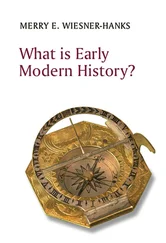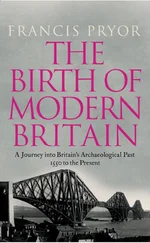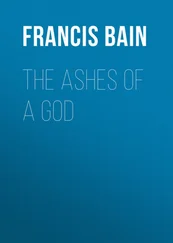R. Nisbet Bain - The Cambridge Modern History
Здесь есть возможность читать онлайн «R. Nisbet Bain - The Cambridge Modern History» — ознакомительный отрывок электронной книги совершенно бесплатно, а после прочтения отрывка купить полную версию. В некоторых случаях можно слушать аудио, скачать через торрент в формате fb2 и присутствует краткое содержание. Жанр: unrecognised, на английском языке. Описание произведения, (предисловие) а так же отзывы посетителей доступны на портале библиотеки ЛибКат.
- Название:The Cambridge Modern History
- Автор:
- Жанр:
- Год:неизвестен
- ISBN:нет данных
- Рейтинг книги:4 / 5. Голосов: 1
-
Избранное:Добавить в избранное
- Отзывы:
-
Ваша оценка:
- 80
- 1
- 2
- 3
- 4
- 5
The Cambridge Modern History: краткое содержание, описание и аннотация
Предлагаем к чтению аннотацию, описание, краткое содержание или предисловие (зависит от того, что написал сам автор книги «The Cambridge Modern History»). Если вы не нашли необходимую информацию о книге — напишите в комментариях, мы постараемся отыскать её.
The first series was planned by Lord Acton and edited by him with Stanley Leathes, Adolphus Ward and George Prothero.
The Cambridge Modern History Collection features all five original volumes:
Volume I: The Renaissance
Volume II: The Reformation, the End of the Middle Ages
Volume III The Wars of Religion
Volume IV: The 30 Years' War
Volume V: The Age of Louis XIV
The Cambridge Modern History — читать онлайн ознакомительный отрывок
Ниже представлен текст книги, разбитый по страницам. Система сохранения места последней прочитанной страницы, позволяет с удобством читать онлайн бесплатно книгу «The Cambridge Modern History», без необходимости каждый раз заново искать на чём Вы остановились. Поставьте закладку, и сможете в любой момент перейти на страницу, на которой закончили чтение.
Интервал:
Закладка:
The most memorable record of the new zeal for ancient Home is the letter addressed to Leo X, in 1518, by RafFaelle. He writes as Master of the Works at St Peter’s, and Inspector-General of Antiquities, having been appointed to these posts in 1515. For a long time he had been engaged in a comprehensive study of the ancient monuments. In them, he says, he had recognised “the divinity of those minds of the old world.” A pitiful sight it is to him, “the mangled corpse of this noble mother, once the queen of the world.” “Temples, arches, statues, and other buildings, the glory of their founders,” had been allowed to suffer defacement or destruction. “I would not hesitate to say,” he continues, “that all this new Rome which our eyes behold, grand and beautiful as it is, adorned with palaces, churches, and other structures, has been built with lime made from ancient marbles.” He next recalls, with details, the progress of the havoc during the twelve years which he has passed in Rome. And then he unfolds his project. Mapping out Rome into fourteen regions, he urges that systematic works should be undertaken for the purpose of clearing, or excavating, all existing remains of the ancient city, and then safeguarding them against further injury. His premature death in 1520 prevented the execution of the design. The greatness of that design is well expressed in one of the Latin elegies which mourned his loss: Nunc Romam in Roma quaerit reperitque Raphael. It shows the grasp of his genius, and is also an impressive witness to the new spirit of the Renaissance.
This was a period at which Vitruvius (edited not long before by Fra Giocondo) and Frontinus found many readers. The classical influence was indeed already the dominant one in Italian sculpture and architecture. It was a power which might tend to cold formalism, as in Palladio, or happily ally itself with the native bent of the modern artist, as in Giulio Romano; but, for good or evil, it was everywhere. Meanwhile scholars were producing learned work in various branches of Roman archaeology. A permanently valuable service to Latin epigraphy was rendered by Jacopo Mazochi and his collaborator Francesco Albertini in Epigrammata Antiquae Urbis Romae (1521), where some use was made of earlier collections by Ciriaco of Ancona and Fra Giocondo. Andrea Fulvio published in 1527 his Antiquitates Urbis Romae. The Urbis Romae Topographia of Bartolommeo Marliano appeared in 1537. Such books, though their contents have been mostly absorbed or transmuted in later works, claim the gratitude which is due to indefatigable pioneers.
The buoyancy and animation of the Renaissance in Italy were sustained throughout by the joys of discovery, and of these none was keener than the delight of acquiring manuscripts. Petrarch was the leader in this as in other ways. He was prepared to undertake any trouble, in his own person or through emissaries, for the sake of finding a new classical book, or a better copy of one which was already known. The first of his epistles To Marcus Tullius Cicero expresses the feelings stirred in him by reading the orator’s Letters to Atticus, Brutus, and Quintus, which he had just been fortunate enough to unearth at Verona: he was not destined to know the Epistolae ad Familiäres, which were found about 1389 at Vercelli. Petrarch had a quaint and lively way, which was copied by his immediate successors, of personifying the hidden and neglected manuscripts of the classics as gentle prisoners held in captivity by barbarous gaolers. The monastic or cathedral libraries of Italy were the places which first attracted research. Boccaccio’s account of his visit to the Abbey of Monte Cassino in Apulia, recorded by a pupil, vividly pictures the scandalous treatment of the books there, which the monks ruthlessly mutilated for the purpose of making cheap psalters, amulets, or anything by which they could earn a few pence. But the quest was not confined to Italy. Italian or foreign agents of the Roman Curia had frequent opportunities of prosecuting research in the libraries of northern Europe. Thus Poggio’s journey to the Council of Constance in 1414, in the capacity of Apostolic Secretary, enabled him to visit several religious houses in Switzerland and Swabia. At the Abbey of St Gall he discovered, to his intense pleasure, the Institutions of Quintilian, previously known only through a defective copy found by Petrarch at Florence. The place in which the books were kept is described by Poggio as a sort of dungeon, foul and dark, at the bottom of a tower. Quintilian, he says, “seemed to be stretching out his hands, calling upon the Romans,” and praying to be saved from the doom to which barbarians had consigned him. Some other classical authors, including Valerius Flaccus, were found by Poggio on the same occasion. He was, indeed, one of the most fortunate of the searchers. Among his rewards were Cicero’s speech for Caecina, Lucretius, Silius Italicus, Manilius, Columella, Vitruvius, and Ammianus Marcellinus. Centuries were to elapse before the process of exploration begun by these early humanists was to be finished. Only in our own day has the actual wealth of Europe in classical manuscripts been ascertained with any approach to completeness. But in the period of the Italian Renaissance discoveries more or less important were of frequent occurrence, and no one could tell from what quarter the next treasure-trove might come. Thus in 1425 Cicero’s rhetorical treatises were found by Gherardo Landriani in the Duomo at Lodi; and four years later Nicholas of Treves, a fiscal agent of the Vatican in Germany, sent thence to Rome the most complete codex of Plautus. One of the greatest acquisitions was among the latest. Not till 1508 did the modern world recover the first six books of the Annals of Tacitus. The manuscript, said to have been found in the monastery of Corvey, was sent from Westphalia to Rome, and was acquired by Giovanni de’ Medici, afterwards Leo X.
But it was more especially the quest for Greek classics that engaged the ardent zeal of the earlier humanists. The comparative novelty of Greek literature stimulated curiosity; Greek codices were sought, not only by students eager for knowledge, but also by a much larger world. Commercial houses at Florence, such as that of the Medici, with agencies throughout Europe and the Levant, spared no expense in procuring Greek books. Princes, and sometimes Popes, joined in the competition. A new Greek classic gave not only the kind of pleasure which an expert finds in a rare book, but also the pride of possession, not necessarily allied with knowledge, which a wealthy collector feels in a good picture. In short, classical antiquity, Greek especially, was vehemently the fashion in Italy, if that phrase be not less than just to the earnestness of the movement. A letter-writer of the time has related that, just after the publication of Politian’s Miscellanea at Florence in 1489, he happened to go into a public office, and found the clerks neglecting their business while they devoured the new book, divided in sheets among them. In an age when the demand for manuscripts had all these forces behind it, the search could not fail to be well-organised, if only as a branch of commerce. For Greek books, Constantinople was the chief hunting-ground. Thither, for at least half a century before the fatal year 1453, many Italian humanists repaired; enjoying, we may suppose, every facility for research. Three such men are foremost among those who brought copies of the Greek classics to Italy. Giovanni Aurispa (1369-1459) went to Constantinople in youth, to study Greek; and, returning to Italy in 1423, carried with him no less than 238 manuscripts. A quiet teacher and student, as he is described by Filelfo, -” placidis Aurispa Camoenis deditus,”—he closed his long life at Ferrara. Guarino da Verona (1370-1460), who also acquired Greek at Constantinople, brought back with him a large number of Greek books. But neither he nor Aurispa can have had better opportunities than Francesco Filelfo (1398-1481), afterwards so conspicuous as a humanist. He studied Greek at Constantinople with John (brother of Manuel) Chrysoloras, whose daughter he married. In selecting the books which he brought home with him, he doubtless had access to the best stores of the Eastern metropolis. Considerable interest therefore attaches to the list of his Greek books which Filelfo gives in a letter to Ambrogio Traversari, written shortly after his return to Venice in 1427. The manuscripts which he enumerates are those which he had carried with him to Italy. He says that he is expecting a few more (“olios...nonnullos”“) by the next Venetian ships from the Bosporus; but we may assume that the catalogue in this letter includes the great bulk of his Greek library. It comprises the principal Greek poets (including the Alexandrian), with the notable exception of the Attic dramatists, who are represented only by “seven plays of Euripides.” In prose he has the historians, from Herodotus to Polybius; of the orators, Demosthenes, Aeschines, and “one oration of Lysias”; no dialogue of Plato, but nearly all the more important writings of Aristotle: also much prose literature, good and bad, of the Alexandrian and Roman ages. The list contains no book which is not now extant.
Читать дальшеИнтервал:
Закладка:
Похожие книги на «The Cambridge Modern History»
Представляем Вашему вниманию похожие книги на «The Cambridge Modern History» списком для выбора. Мы отобрали схожую по названию и смыслу литературу в надежде предоставить читателям больше вариантов отыскать новые, интересные, ещё непрочитанные произведения.
Обсуждение, отзывы о книге «The Cambridge Modern History» и просто собственные мнения читателей. Оставьте ваши комментарии, напишите, что Вы думаете о произведении, его смысле или главных героях. Укажите что конкретно понравилось, а что нет, и почему Вы так считаете.












